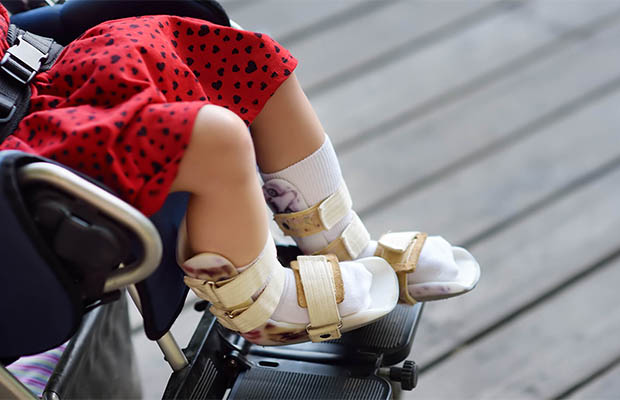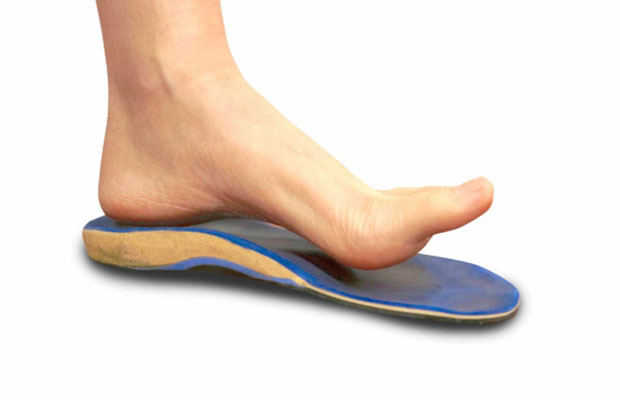Do Orthotics Work For Flat Feet? Pros And Cons Of Orthotics

Most people stand, walk, run, and engage in sports for a large portion of their waking hours. When you run or carry heavy objects, your feet must support much more stress and bear the weight of your entire body. It’s critical to take good care of your feet, and having flat feet—also referred to as flatfoot—presents additional difficulties.
Supporting these arches is essential for avoiding pain and injury, despite how little it is. Do orthotics work for flat feet?
Yes, firmly supporting your arch while standing, walking, or running encourages better biomechanics. That’s the short answer. Orthotics for flat feet reduce pain, balance your body, and align your spine, which lowers your risk of developing issues with your ankles, knees, back, and hips. Flat feet benefit greatly from a good orthotic because it is supportive enough to control body weight. Read our article to learn more about orthotics and flat feet.

Table of Contents
What Are Orthotics?
You probably spend a significant portion of your day on your feet, which must support the weight of your entire body. Your feet are unique and slightly different in size and shape from everyone else’s feet, even though supportive shoes can help. When you purchase shoes from any retailer, they are not specifically designed to perfectly fit and support your unique feet.
Your feet are perfectly supported by orthotics, which are insoles that are made to order. They are a non-invasive, non-surgical way to enhance your feet’s functionality and ease any discomfort you may be feeling. There are numerous types of orthotics, including ankle braces, footpads, shoe inserts, and arch supports.
What Are Flat Feet?
When you have flat feet, your foot’s entire surface can touch the ground when you’re standing because your foot’s soles don’t have a noticeable curve to them. Flat feet can result from an injury, obesity, diabetes, or aging, but they are most frequently brought on by improper development during childhood.
Even though flat feet can cause changes in how your legs are aligned, some people with flat feet don’t feel any pain. Your knees and ankles may develop issues as a result, which may lead to discomfort and a loss of function. For flat feet, there are two categories:
Rigid Flat Feet (RFF): A person with RFF has a nearly flat foot without an arch. Therefore, whether a person with RFF stepped on cement while standing or while sitting, the imprint would be the same.
Flexible Flat Feet (FFF) are the most prevalent type of flatfoot. When a person with FFF is sitting, their foot has an arch, but when they stand, the arch disappears.
How Do Orthotics Work For Flat Feet?
Flat feet, sadly, do not magically disappear. However, for long-term relief, the best orthotics for flat feet are necessary. Physical exercises to strengthen and stretch your feet can temporarily ease your symptoms.
Horton’s Orthotics and Prosthetics of Arkansas offers the best flat foot orthotics to alleviate heel pain and other foot issues brought on by flat feet. To help you accomplish your goals, our orthotics are made specifically for your feet.
Supportive Shoes And Shoe Modifications
There is a good chance that by the end of the day, your feet, ankles, and back will be in pain if you spend a lot of your day walking, running, or standing. Your daily life can be made much more comfortable by having supportive shoes made to order or having your shoes modified.
Supportive shoes can:
- Improve arch support
- Prevent bunions
- Decrease pain caused by walking, running or standing
- Stop the foot from rolling or turning
- Allow the foot to spread out more
Arch Support Shoe Inserts And Insoles
Your neighborhood pharmacy may sell over-the-counter shoe inserts, but they frequently come in a “one size fits all” design that is completely inappropriate. These insoles might make your feet feel more painful or put uncomfortable pressure on the bottoms of your feet.
One common misconception about flat feet is that you need high-arched shoe inserts to ‘push’ your arch back up if you have flat feet. Actually, if you want to prevent foot and ankle pain, you should start with a lower arch.
Because Horton’s shoe inserts are custom-made, our orthotics relieve any pressure you may feel while walking, running, or even just standing still for extended periods of time.
Types Of Orthotics For Amputees
Additionally, supportive footwear, shoe inserts, and other orthotics may be required by those who have undergone an amputation. As you learn to move with a prosthesis, orthotics for one foot can help prevent pain in that foot, leg, knee, or hip.
Amputation can cause a significant, frequently very abrupt change in one’s life. We have personal experience with how challenging it can be for those who are facing or have faced amputation to look past the loss of a limb. It may feel completely isolating and derailed during this process. Your life might seem to be permanently and negatively changing. Custom orthotics and prostheses made by compassionate, experienced prosthetists can make a significant difference and guarantee that you can continue to pursue your objectives and lead a normal life.
Education And Care From Horton’s
Every customer is important to Horton’s, and we work hard to ensure that they feel at ease, secure, and heard. Our Amputees Beyond Life’s Expectations, or ABLE program, is a support group to assist you in transitioning into the following phase of your life.
Horton’s also has Amputee Ambassadors, doctors, and therapists in addition to offering high-quality, custom orthotics and prosthetics. Through our educational programs, you can connect with other amputees and their families to help you return to “normal” life and smoothly transition into what you want your life to be or to continue being.
Life after amputation and healing depend on knowledge, relationships, and compassion. Visit the education hub for videos and details about using orthotics and prosthetics as well as life after a new amputation. Additionally, you can find solutions to our most typical queries.
Advantages Of Orthotics For Flat Feet
There is no one-size-fits-all remedy for finding the best support for flat feet. For this reason, a personalized course of treatment has the following benefits:
- Custom-fit for comfort
- Maintains correct alignment of foot and leg
- Supports the arch and heel
- Absorbs shocks
- Distributes pressure across the sole of the foot
- Improves balance
- Alleviates pain when walking, standing, or running
Disadvantages Of Orthotics For Flat Feet
A customized insert’s cost is a drawback. Although generic drug store alternatives exist, they might not be the best choice for the majority of people. Flat feet cannot be supported by floppy gel or foam inserts or other low-cost solutions.
Read More: Are Crocs Good for Flat Feet?
Tags: Orthotics